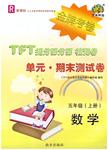题目内容
The Donkey Mobile Library

It is a bright morning in the Ethiopian countryside. Yohannes walks beside a pair of donkeys that are pulling a two-wheeled cart. They arrive at the agricultural town of Awassa where Yohannes opens the sides of the cart to display, not the usual vegetables or tools, but children’s books. This is the Donkey Mobile Library, the first of its kind in Ethiopia and one of only a few in the world.
Yohannes was born in Ethiopia, North Africa, but trained to be a librarian in the USA and returned to Ethiopia years ago. The cart is full of picture books donated by American libraries, teachers and school children.
Yohannes arranges small painted benches in the shade of the trees, and suddenly Ethiopian children come shouting and racing down every road and path. It’s mobile library day! They circle the bookshelves with great excitement. Until the Donkey Mobile Library began its regular two-monthly visits, many of these children had never seen a book.
“Without books, education is very dull, like food without salt. You can survive but you can’t really come alive,” says Yohannes. “The ability to read is the basis for greater productivity, better health and longer life. Even though the children lack material goods, with books they can imagine a world of possibilities.”
Yohannes first worked in the children’s section of the main library in America. Surrounded by books he had never seen before, he realized how joyful and imaginative children’s literature is. He says, “I always thought of Ethiopia. But how could I bring children’s books to my home country when it had almost no libraries to keep the books in?”
He contacted Jane Kurtz, a writer born in America but brought up in Ethiopia, and together they created the Donkey Mobile Library. The children say that the Library has given them ideas about what they might do in the future. A child called Dareje wants to be a scientist and find a cure for life-threatening diseases. An eleven year-old girl, Fikerte, wants to do research about the moon and discover new facts about outer space. Tamrat, aged 10, comes every time.
“What brings you back here time and time again?” the librarian asks him.
“The stories,” Tamrat replies instantly.
1.How do the children feel when they see the Donkey Mobile Library?
A.Curious. B.Surprised. C.Interested. D.Excited.
2.We can conclude from the passage that .
A.Ethiopian children have no idea about their future
B.Yohannes and Kurtz share similar life experiences
C.donkey carts in Awassa usually carry vegetables and tools
D.most books in the Donkey Mobile Library were bought in America
3.According to the passage, the Donkey Mobile Library .
A.visits the countryside every day B.benefits Ethiopian children a lot
C.was created by Yohannes himself D.was the first of its kind in the world
4.Where is the passage most likely to have been taken from?
A.A news report. B.A book review. C.A historical story. D.An advertisement.
1.D
2.C
3.B
4.A
【解析】
试题分析:本文是一篇新闻报告,介绍了埃塞俄比亚的流动的图书馆的相关情况。
1.D 细节题。根据第4段2,3行They circle the bookshelves with great excitement.说明孩子们很兴奋,故D项正确。
2.C 推理题。根据第二段2,3行They arrive at the agricultural town of Awassa where Yohannes opens the sides of the cart to display, not the usual vegetables or tools, but children’s books.说明也许以前的驴车里面卖的是蔬菜,但是这次里面都的书,故C项正确。
3.B 推理题。根据文章倒数第三段,尤其是第三行The children say that the Library has given them ideas about what they might do in the future.可知孩子们通过书本了解到很多以前都知道的知识,让孩子们得到了很多的好处,故B项正确。
4.A 推理题。本文讲述了埃塞俄比亚的流动的图书馆,那么最有可能是一篇新闻报告,不会是书评和历史书更不会是广告。故A正确。
考点:考查新闻报告类短文阅读
点评:本文是一篇新闻报告,介绍了埃塞俄比亚的流动的图书馆的相关情况,集中考查了推理题,要求考生在仔细阅读文章的基础之上,认真审题,结合题目和各选项做出合理的判断和推理。

 提分百分百检测卷单元期末测试卷系列答案
提分百分百检测卷单元期末测试卷系列答案 小学期末标准试卷系列答案
小学期末标准试卷系列答案